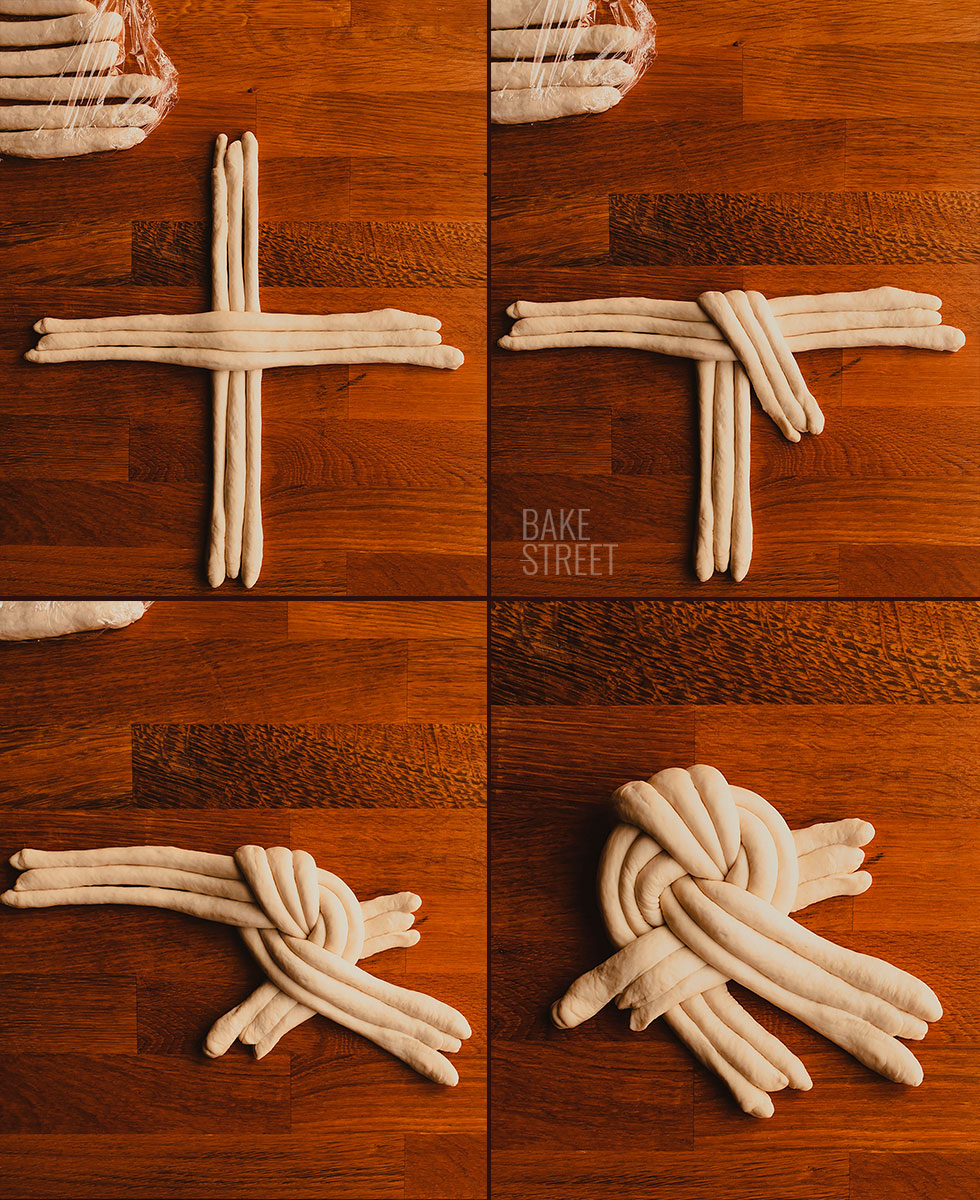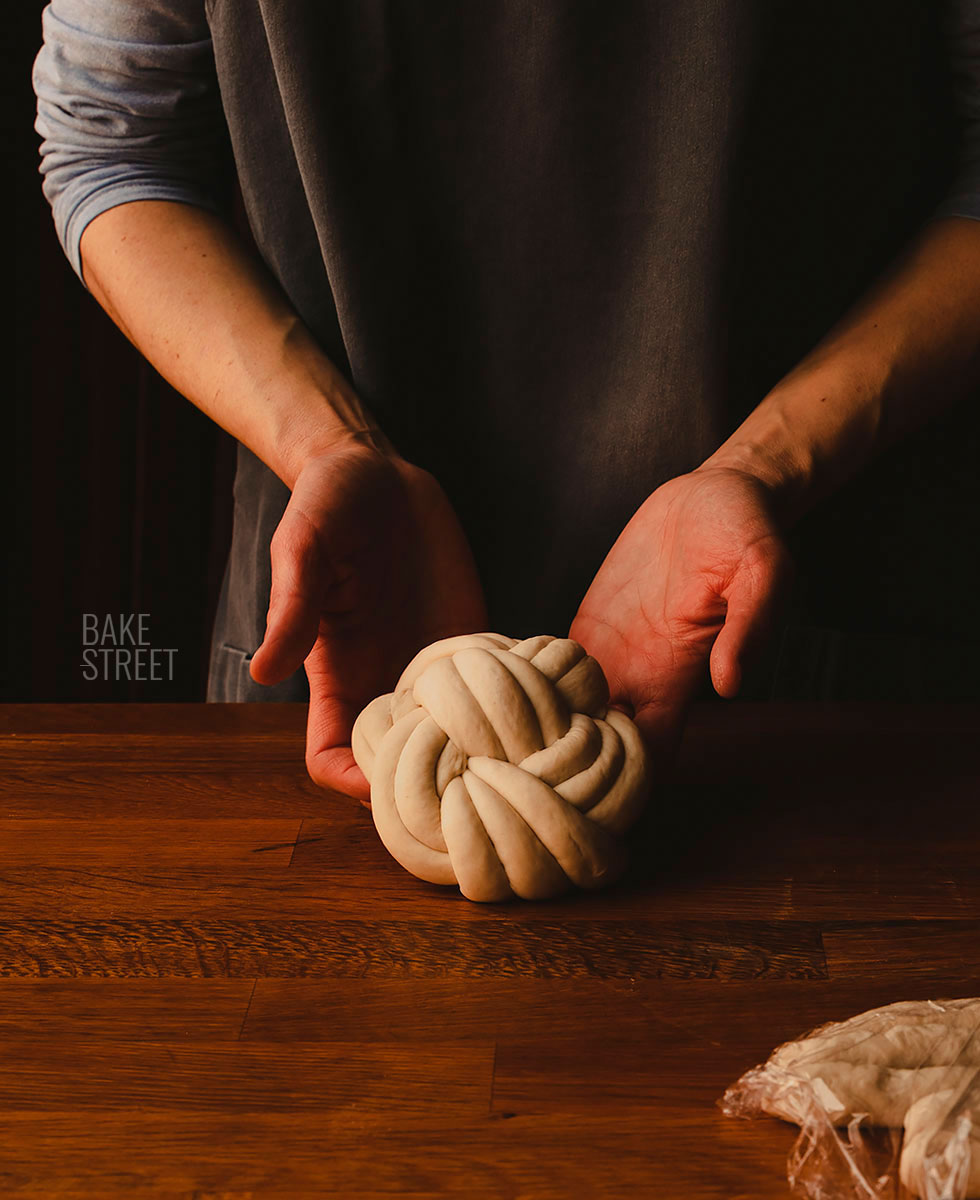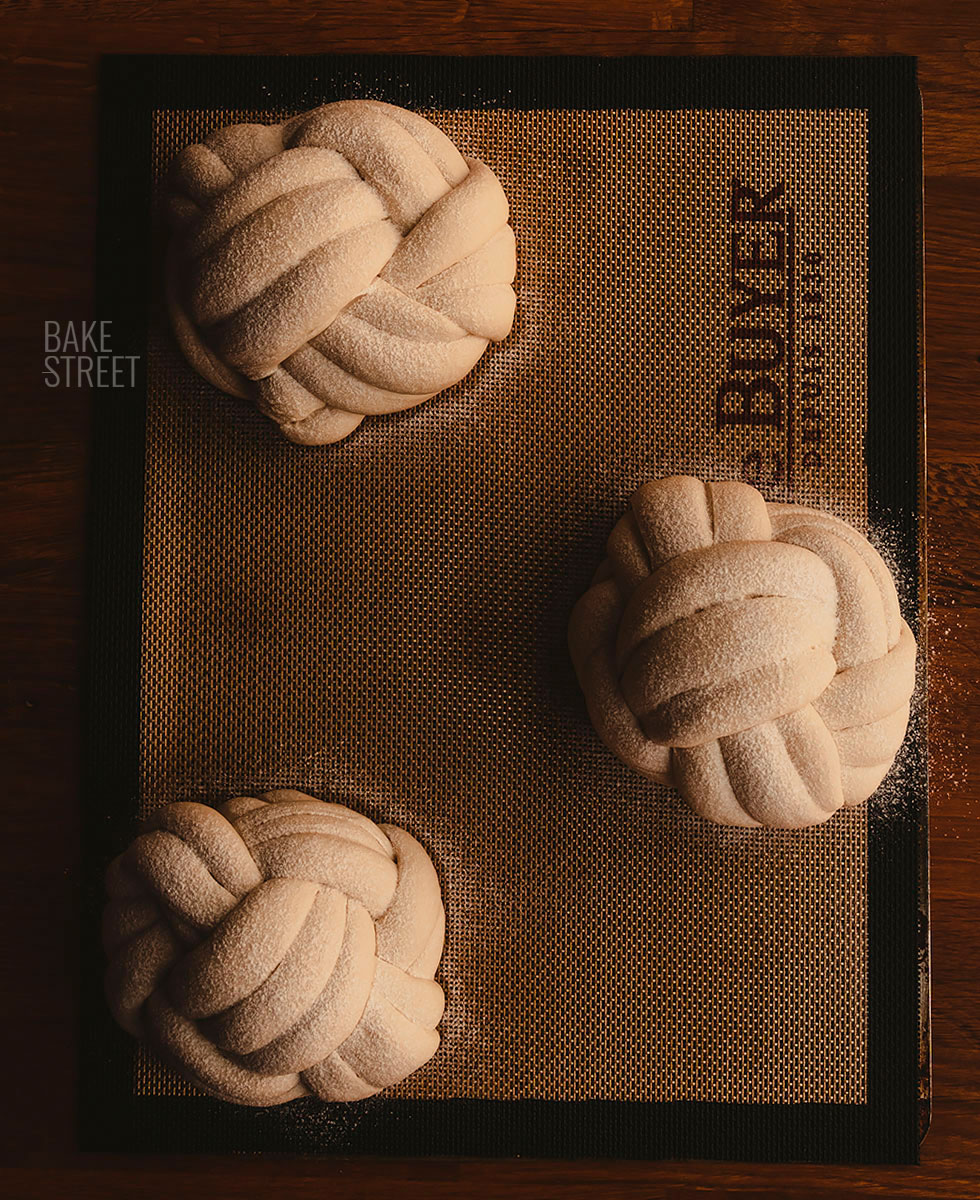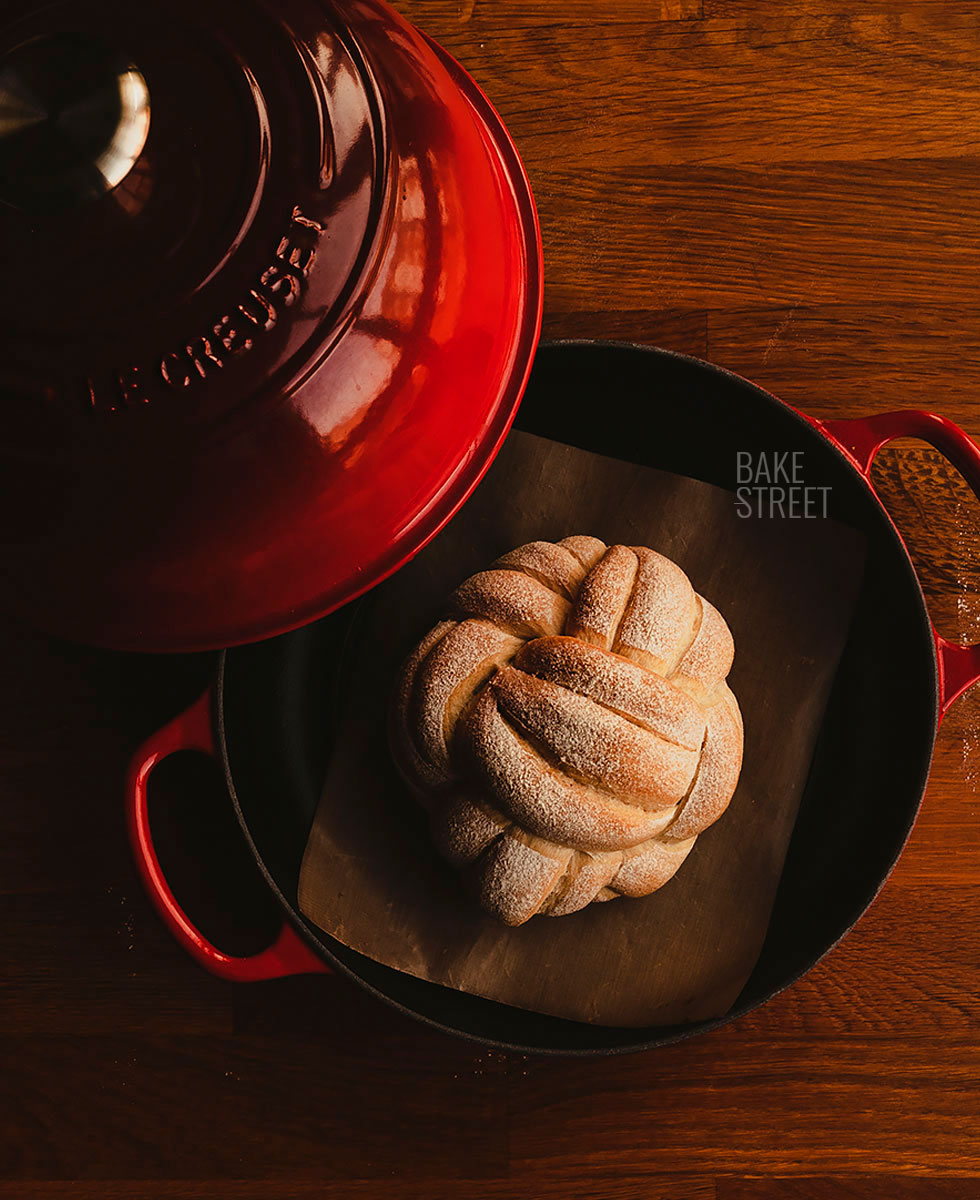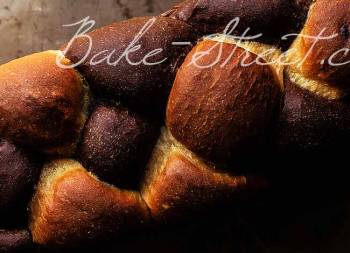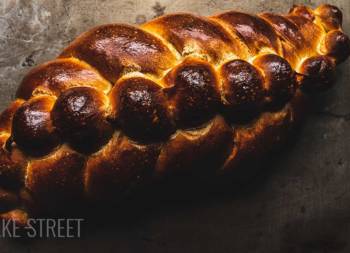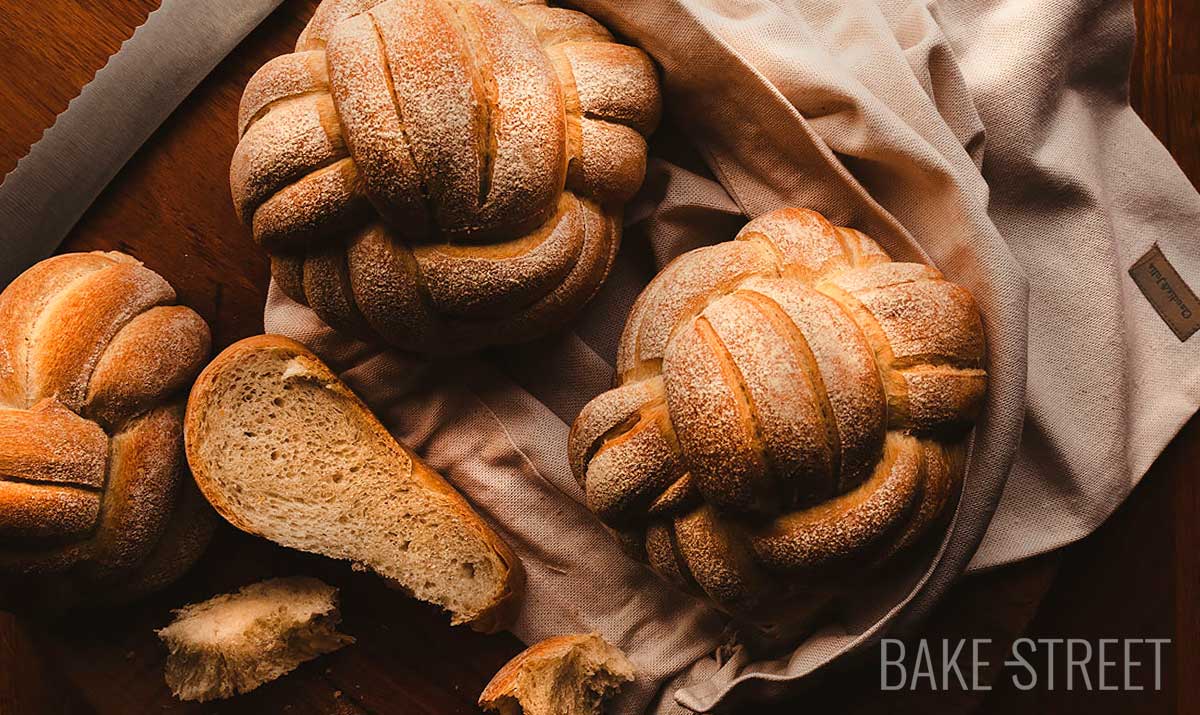
Braided Bread – Pan Pelota
It’s been a long time since I left a bread here, to tell you the truth, I have been several months without making bread to the point of thinking, hey, I’m going to forget! I have always told you that it is one of the best options we can choose when we want to disconnect and relax a little. But, if we also want to enhance our creative side, we can carry out a different form as this Braided Bread – Pan Pelota.
I remember the first time I saw it, it was in a course I did with Josep Pascual in Extremadura. I have very good memories of that weekend, plus I was lucky enough to meet wonderful people with whom, to this day, I still maintain a relationship. Bread unites a lot 🙂
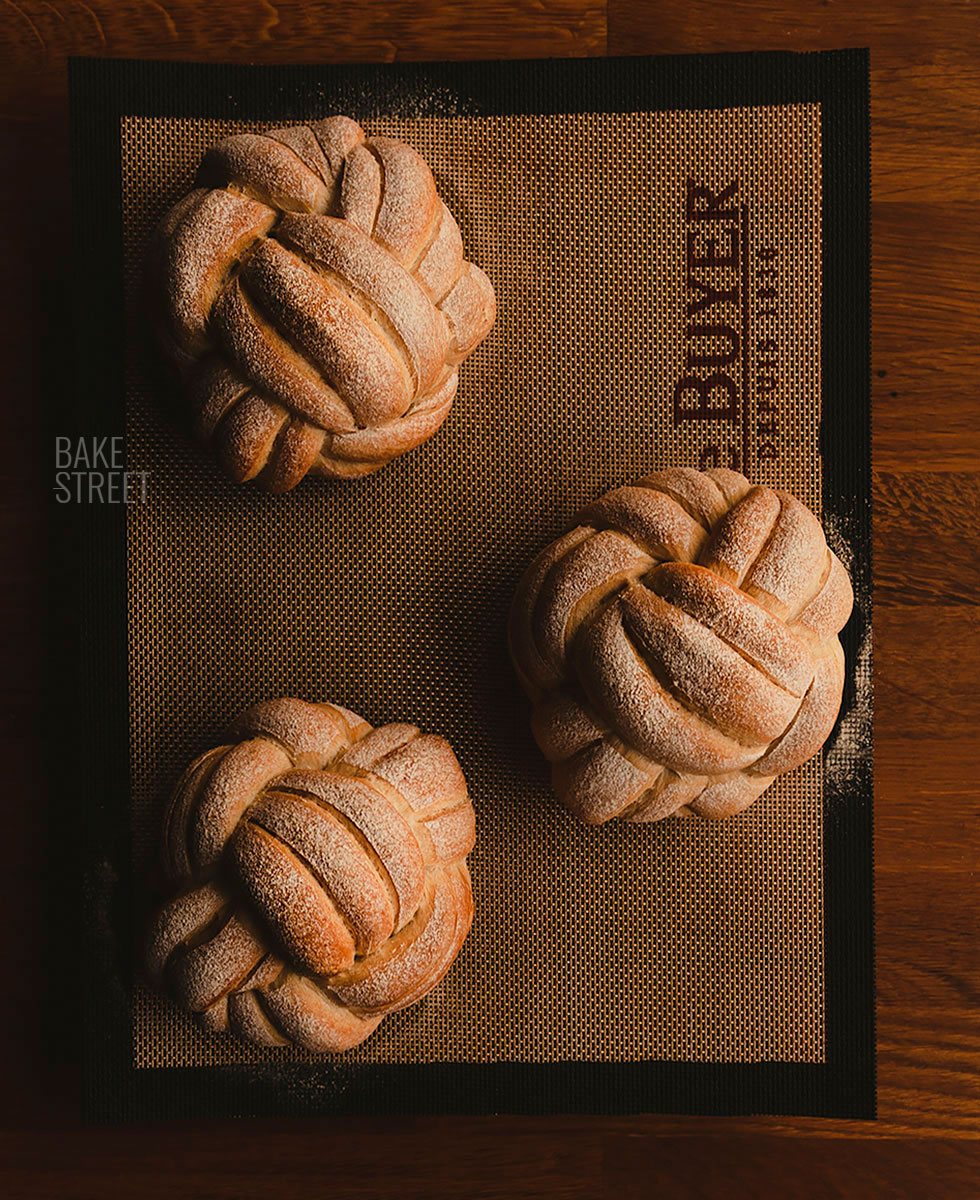
Surely many of you know Josep Pascual, in fact I have already mentioned him on my website. Like this Grian Bread that I made based on one of his beautiful breads. I remember that he became known for his creative breads. He always carried out different formings to what we used to see in the social media (at that time there was not as much information as now, much less the bread had so much visibility). Another particularity that he had, and still has, is the decoration of his breads with stencils, many of them a bit particular. The result of his elaborations was very striking.
Among all the elaborations that we learned to make with him, in a bakery in Talaván (Cáceres), one of them was this bread. To be honest, the first time I made it, it didn’t turn out very well… Not to say that it was terrible, hahaha. Forming the dough cords and then braiding/shaping the bread was a bit complicated at the time. But, I really enjoyed the experience and the company.
Carrying out the Braided Bread – Pan Pelota recipe.
The recipe that I have carried out on this occasion is not Josep Pascual’s, I mean the dough recipe. This is a bread dough that works very well for this type of forming and with which you will get a great bread for sandwiches, slicing or whatever you prefer. But, on the other hand, I have followed its forming process to the letter.
In the elaboration, I detail the whole process step by step so that you can carry it out at home obtaining very good results. And so that you do not get lost during the process, I link you to a video where you can see how to carry it out in a more visual way so that there is no room for error.
When it comes to bake it, we can do it in two ways; on a perforated tray or steel baking sheet, or in cocotte for bread. In both cases the results are exceptional, so I leave to your choice how to carry out this last step of the process.
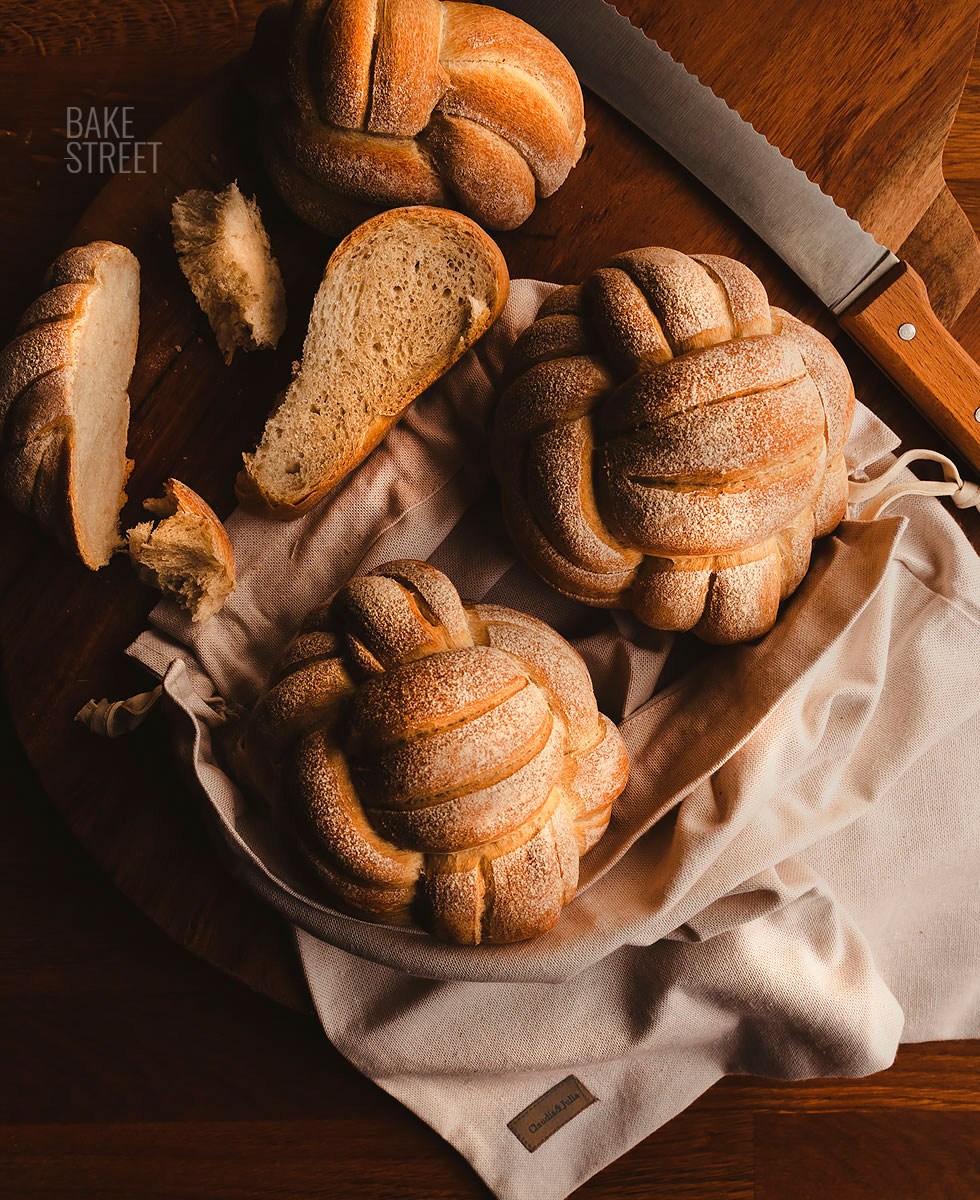
Recipe Braided Bread
Ingredients for 3 breads 265 g/piece
DOUGH:
- 500 g T45 flour or bread flour
- 290-300 g water
- 18 g olive oil
- 6 g fresh yeast or 2 g dry yeast
- 9 g salt
MATERIAL WE WILL NEED:
- KitchenAid or Stand mixer
- scraper*
- Cocotte oven bread* (optional)
- perforated tray*
- perforated mat*
- parchment
- steel baking sheet (optional)
- linen bread bag*
*You have a 5% discount on the website Claudia&Julia using this code BAKESTREET. Delivers throughout Europe.
Instructions
Make dough for braided bread.
- In the bowl of the KitchenAid or stand mixer, add the flour, water and yeast.
- Knead at medium speed until you obtain a homogeneous dough.
- Add the salt and knead again until homogeneous.
- Once you have a half-developed gluten, pour the oil. The ideal is to do it in two batches, wait for the dough to absorb the first one before integrating the next one. This step facilitates the kneading/integration process of the greasy ingredients.
- The complete kneading process can take about 20-30 minutes to develop the gluten well and obtain an elastic, soft and very well developed dough. The dough, always after a rest, must pass the membrane test. To do this, take a portion of dough and slide it between your fingertips. If you can achieve a thin veil of dough, without it cracking or, if it does, a perfect circle, then your dough is ready.
- NOTE: If you make rests during the kneading process, the dough should always be covered to prevent it from drying out.
Make bulk fermentation.
- Roll the dough making a ball, grease a bowl/recipient lightly with oil and put the dough inside.
- Cover with film or its own lid and let rise until it grows 1/3 of its volume. In my case it was 2 hours at 72,5ºF/22,5ºC.
- Place in the refrigerator until the next day.
Temper the dough before working with it.
- Remove the dough from the refrigerator and temper for 1 hour. The dough will have risen more than 4 times its size.
- With the help of a scraper, divide the dough into 3 pieces of approximately 265 g.
- Each piece is divided into 6 parts of 44 g each. You need 6 strands of dough to form each ball bread.
- Do not worry if there are scraps of dough, place them in each corresponding piece trying to give a rectangular shape.
- Cover with plastic wrap and let rest for 5 minutes.
Form the dough cords.
- With the help of a rolling pin, stretch each piece slightly, trying to give it a rectangular shape.
- Roll the dough at the widest part to form a cord.
- Place your hands on the piece and slide, at the same time, exerting a little pressure to lengthen the cord of dough.
- Repeat the same process with the rest of the pieces.
- Cover the dough with plastic wrap whenever you have handled it to prevent it from drying out and making it difficult to work with.
- Let it rest for 10-12 minutes to allow the gluten to relax and allow us to stretch the dough well.
- After the resting time, stretch each cord again in the same way as the previous time. Place both hands on the dough and slide, rolling the piece and taking each hand to one end, to give length. We need each dough cord to measure about 40-42 cm.
- If you notice that the dough is still tense or tends to shrink to regain its initial shape, let it rest a little longer to allow the gluten to relax completely.
Shape braided bread.
- To shape each ball loaf, you need 6 strands of dough 40-42 cm long.
- Place 3 cords, side by side, of dough in a vertical position.
- On top of these, place another 3 strands of dough horizontally forming a cross.
- Take the part formed by three strands of dough from the top of the cross and lower them down, placing them on the right side of the cross.
- Fold the right side of the cross over the part of dough that has just been lowered.
- Overlap the lower part of the cross, bringing it to the right side, over the last part we have lowered. The purpose is to braid the dough.

- Bring down the left side of the dough and place it under the fold that corresponds to the right side.
- Braid the longest section with the last one we just lowered.
- Braid the right side, with the last one we moved. And, in the same way, braid the left side with the longest strand left at the bottom.
- Finish braiding each section until you join the final parts in a peak.

- To form the loaf, start by carefully rolling the beak-shaped part of the loaf over itself. In this way, the wider part will be placed on top of the rolled dough, giving rise to a bread in the shape of a braided ball.
- Shape it into a round shape, carefully and without pressing, using both hands.

- Place the bread on a perforated tray lined with a perforated mat.
- Repeat the same process with the other two loaves.
- Cover with plastic wrap and let rise until they have more than doubled in volume. In my case they were 2 hours at 72,5ºF/22,5ºC.
- NOTE: In this video you can watch Josep Pascual how he shapes this bread.
Bake bread on a tray or steel baking sheet.
- Preheat the oven to 410ºF/210ºC with heat up and down.
- Sprinkle a little flour over the surface of the loaves.
- Place at medium height and bake with steam for 10 minutes.
- Remove the steam, reduce to 374ºF/190ºC and bake for 20 minutes more.
- Finally, bake for 5 minutes with convection at374ºF/190ºC.
- Remove from the oven and let cool completely on a wire rack.
- Serve.

Bake bread in a cocotte bread oven.
- If we use the Le Creuset cocotte bread oven, we can put in a single loaf of 265 g or make a larger loaf, with all the dough, and take better advantage of the baking time.
- Preheat the oven to 410ºF/210ºC with heat up and down. Insert the Le Creuset cocotte (base and lid) inside at the same time you turn on the oven to preheat. To be able to bake bread in it, it must be very hot.
- We will place it on the rack and in the lowest part of the oven, the last slot. The ideal is to preheat 20-30 minutes before placing the breads.
- To bake a 265 g loaf: Open the cocotte oven, with the help of gloves, remove the lid of the cocotte and place it on a wooden board.
- Place the bread ball in the Le Creuset cocotte, with baking paper or Teflon on the base, place the lid, put inside the oven and close the door.
- Leave for 10 minutes at 410ºF/210ºC.
- After these first 10 minutes, open the oven door, remove the lid of the cocotte with the help of gloves and leave it on a wooden board.
- Finish cooking. Lower the temperature to 374ºF/190ºC and finish cooking without the lid for 20 minutes.
- After this time, place at 374ºF/190ºCwith convection and leave for 5 more minutes. In this way we favor the drying of the bread and improve the crust.
- Once you finish baking, take it out and let it cool completely on a rack before opening it.
- If you prepare a bread with all the amount of dough that I leave in the list of ingredients, you should cook 20 minutes with lid at 410ºF/210ºC, 25 minutes without lid at 374ºF/190ºC and 5 minutes with convection at 374ºF/190ºC.

Notes
- T45 flour is equivalent to a medium-strength wheat flour, with a W=280, the characteristic of this flour is that it has very good elasticity/extensibility. Bread flour can be used instead.
- Can I make the whole process without cold retarding? Yes, you can. Following the same steps that I detail you, only avoiding the step of delaying it in the refrigerator. Dividing the process in 2 days, not only makes it more bearable, but also favors the appearance of very pleasant aromas and flavors due to a slow fermentation process.
- If you want to use sourdough, you can do it without any problem. The ideal is to add a maximum of 20-30% of sourdough with respect to the final weight of the flour used. Remember to remove the amount of flour and water from the final dough that we incorporate in sourdough.
- To know if our bread has finished its baking time, you can do it by pricking it with a digital thermometer and checking its internal temperature. It should be around 194ºF/90ºC.
- The bread can be baked either on a baking tray, as a cocotte or on a steel baking sheet. It is important that it has steam during the first minutes of baking to favor its expansion.
- This bread can be kept in a linen bread bag for 24-48 hours maximum.

I'm sure you're going to enjoy making this Braided Bread - Pan Pelota at home. Not to mention the super party your friends and family will give you when they see it, I'm sure they will be amazed!
Not to mention that I will be delighted to see it for myself, I wish you a wonderful start of the week!
Lots of love,
Eva
This post containes affiliated links.
